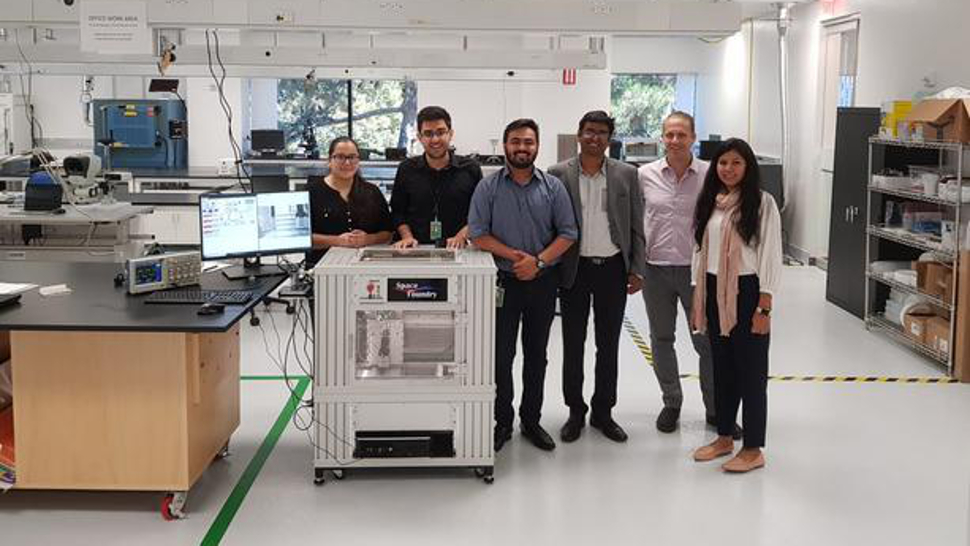Forget 3D printing: Plasma printing in space is where it’s at
Multi-material printing which suits space, the IoT, and more…

Innovative startup Space Foundry has been talking up what could be the next major step on from 3D printing, namely plasma printing.
Space Foundry is the brainchild of Ram Prasad Gandhiraman and Dennis Nordlund, and plasma printing is the culmination of three years of hard work.
Whereas 3D printing, in basic terms, simply creates plastic objects (from filament), a plasma printhead changes the material as it’s being fashioned – with “integrated fluid delivery design [enabling] mixing of multiple liquid precursors and gas mixtures” – and it’s capable of printing with multiple materials.
- The world’s cheapest 3D printer costs only $99.99
- Take note: 3D printers could make you seriously ill
- Here are the best 3D printers of 2019
So, for example, instead of just printing objects, a plasma-based device can produce chips which are printed on a glass surface, for example. This could be potentially revolutionary for the Internet of Things in terms of being able to use glass-based circuit boards.
Nordlund enthuses: “Imagine tomorrow, the head-up display need not exist in a car; the windshield can be a device beaming information. The world has endless possibilities with this new form of printing.”
Defying zero gravity
And not just the world, but further afield. A plasma printer can print on any surface, and could be a big factor in driving forward with the ability to print in space (with the lack of gravity proving an obvious and highly tricky challenge for the humble 3D printer).
So, how much does one of these plasma printers cost? As Your Story reports, Space Foundry is selling a standalone printer for in excess of $100,000, and has fulfilled orders from six customers – one of which includes NASA.
Are you a pro? Subscribe to our newsletter
Sign up to the TechRadar Pro newsletter to get all the top news, opinion, features and guidance your business needs to succeed!
The startup has also received a grant from NASA to the tune of $2.5 million, which clearly underlines the potential for space-based plasma printing.
Going forward, the plan for this Silicon Valley-based startup is to offer short-run manufacturing and a contract development service later in 2020. Once over 100 plasma printers have been sold, the firm also plans to shoot for some serious visibility and publicity with a full marketing team.
- Best printers of 2019: inkjet, color, mono and laser printers
Darren is a freelancer writing news and features for TechRadar (and occasionally T3) across a broad range of computing topics including CPUs, GPUs, various other hardware, VPNs, antivirus and more. He has written about tech for the best part of three decades, and writes books in his spare time (his debut novel - 'I Know What You Did Last Supper' - was published by Hachette UK in 2013).